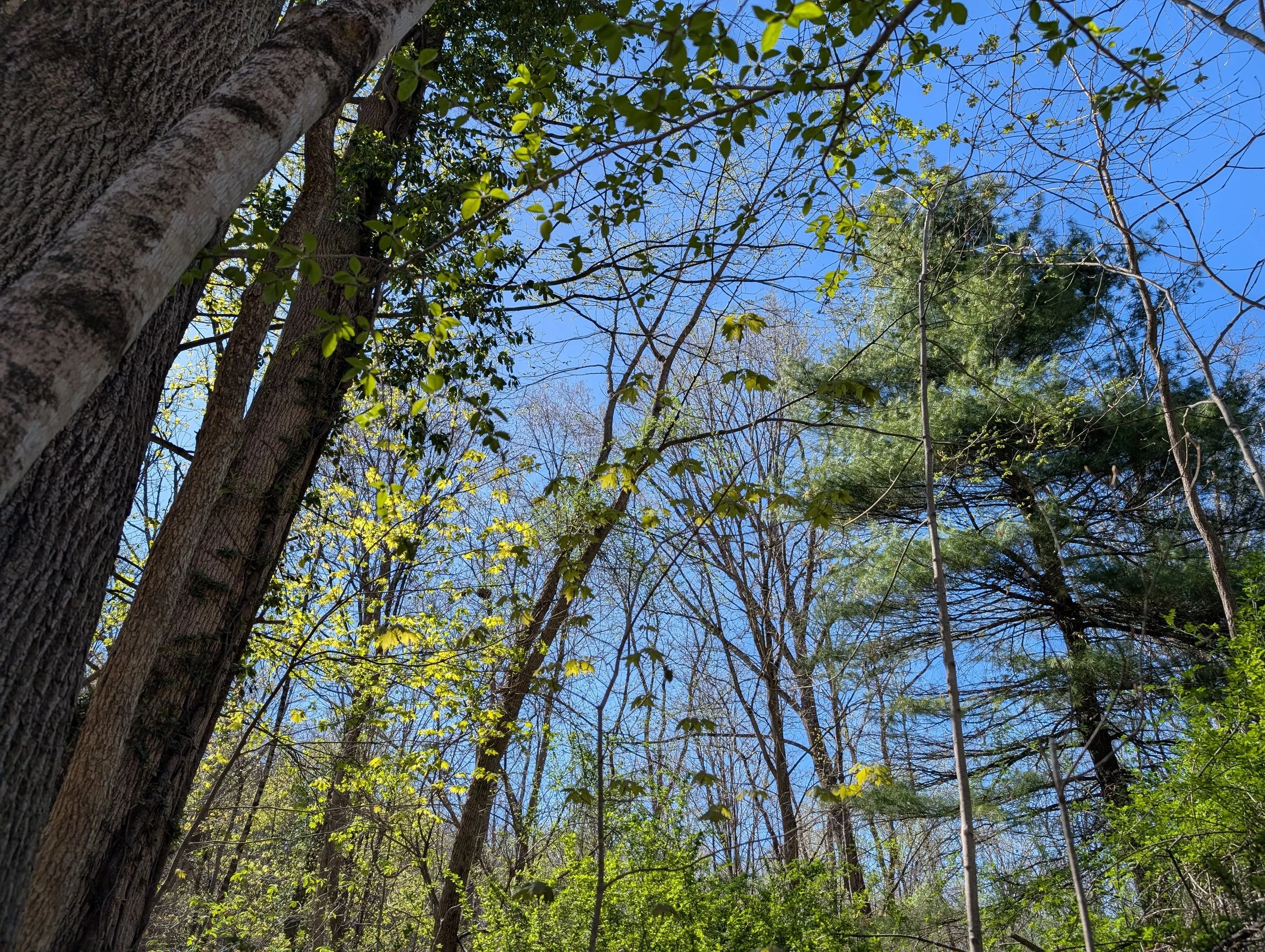Earlier this year, I had the opportunity to observe my nervous system and care for this part of me after I became dysregulated. I went on a trip that included flying and visiting family, both potential nervous system activators for me. Traveling touches an old fear in me of not being able to get what I need. Recent events have also contributed to a sense of flying being scary or risky. Being around groups of people and sharing living space can touch a similar feeling in me. Being with family, in particular, can bring up all kinds of old feelings, wounds and memories of unmet needs. Even when we deeply love the people to whom we are related, it can be challenging to spend extended time together.
During the trip, I did my best to hold myself with gentleness and care, and it was somewhat surprising to me when I got home and, more or less, fell apart. Even though I managed okay during the trip, I could immediately tell upon returning to the comfort and safety of my home and daily life that I was carrying things in my body. We don’t always know the impact something is having on us on a body level until it comes out in some way. It was clear to me, at this point, that my nervous system needed some tending to.
How could I tell?
I felt hypersensitive to my surrounds, which showed up as being on high alert and hypervigilant. I wanted to be left alone and away from people. I also felt lethargic, had low-energy, and a sense of collapse. I noticed a well-spring of emotions sitting just below the surface and was easily irritated.
All of the above are clues that our nervous system is activated in some way. In other words, our fight, flight, and freeze response has been turned on. It can be really obvious: we may feel the urge to get/run away; we may want to fight someone; we may feel frozen or like an animal playing dead. There are more subtle ways it can show up, such as simply feeling tired and like we don’t want to get out of bed or do anything. We may get annoyed more easily and/or snap at people.
To be clear: there is nothing inherently bad or wrong about being in fight, flight or freeze. It is an important survival mechanism and a part of ourselves worth honoring. Thank you, nervous system, for helping me stay alive.
The trick, for many of us, is that we may never have learned how to regulate our nervous system, never learned how to move from fight or freeze to rest and restore, or never even had a simple experience of feeling truly safe. This, you may agree, is worth learning and experiencing. The alternative is being stuck in some degree of an activated response (hyperarousal or hypoarousal) for days, weeks, decades at a time.
What can we do to support a balanced nervous system? How do we learn to support and settle our bodies when they are activated?
In my experience, there’s no one size fits all answer. We try things and notice how our body responds. You may already know the activities you do that bring a feeling of relaxation and calm, or a sense of being pleasantly energized and alive.
Here’s what I believe to be key: tending to our nervous system is a practice. It’s the small-ish things we do on a regular basis that have a lasting impact. It’s also important to have an awareness of how the practices we try feel in our body. This gives us information on what is helpful to our specific body and nervous system.
When I got back from my trip, it took a significant number of days for me to come back to a sense of okayness and well-being in my body. This was not a one and done situation. I practiced caring for my nervous system on the daily, or at least as much as I was able to in the midst of life tasks and obligations. In that time, a few things seemed to make the biggest difference: journaling; being outside; and feeling not alone.
Some additional practices I have found to be helpful: walking in the woods; sitting next a creek or river; gentle, slow, mindful movement; dancing; vigorous movement; loving-kindness mediation; drawing; hands in the dirt, feet on the soil; talking to a supportive friend, partner or therapist; sitting with a pet; and being held.
One of my teachers, Dr. Peggy Rowe Ward, shared this list of supportive practices: singing, dancing, sharing stories and silence. In his book, My Grandmother’s Hands, Resmaa Menakem includes humming and rocking as nervous system supports, among others.
In my example, I’m sharing about the impact of traveling. I imagine you can think of events in your life and the world that may be impacting your body and nervous system in similar ways. Sometimes it’s not a singular event, but something more generalized and on-going that keeps our nervous systems on high alert. In those instances, too, having a practice that includes caring for your nervous system can make a difference on your sense of well-being.
What practices and activities do you find soothing or enlivening?
My understanding of the nervous system has been informed by the following people and sources:
Dr. Daniel Siegel’s book Mindsight and his term “The Window of Tolerance”
Dr. Larry Ward, whose term “The Zone of Wellbeing” I love, and Dr. Peggy Rowe Ward, co-founders of The Lotus Institute
Dan Leven, founder of LIFE Movement, and his teachings on polyvagal theory
Resmaa Menakem and his book My Grandmother’s Hands
Katherine Grigg, MPC, RSMT, offers a holistic approach to healing with roots in somatics, body psychotherapy, spirituality and mindful movement. Her practice is in Montague, MA, where she sees clients in-person and virtually. Specializing in working with women, members of the LGBTQIA2S+ community, adolescents and spiritual seekers. Contact her for more information.



